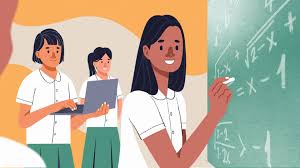Physical Address
304 North Cardinal St.
Dorchester Center, MA 02124
Physical Address
304 North Cardinal St.
Dorchester Center, MA 02124

The dismal results of Filipino students in recent global learning assessments have ignited conversations among educators, policymakers, and parents. These assessments, which test reading literacy, mathematics, and science, revealed that the majority of Filipino students are lagging behind their peers from other countries. The reasons behind this performance are multifaceted and warrant a closer examination.
Reading literacy in the Philippines plays a crucial role in the overall academic performance of students. Unfortunately, Filipino students scored particularly low in this area. One contributing factor is the lack of access to quality educational materials. Many schools, especially in rural areas, lack sufficient textbooks, libraries, and other reading resources. Without these fundamental tools, students struggle to develop strong reading skills from a young age.
Moreover, the home environment significantly impacts reading literacy. In many Filipino households, especially those below the poverty line, parents may not have the time or resources to foster a reading culture. This lack of early exposure to reading hinders the development of critical literacy skills, making it difficult for students to catch up later in their academic journey.
The overall educational infrastructure in the Philippines also affects student performance. Overcrowded classrooms, insufficient numbers of qualified teachers, and outdated teaching methods contribute to the problem. Many schools operate with a student-to-teacher ratio that is far from ideal, making it challenging for teachers to provide individualized attention and support to each student.
In addition to these challenges, the curriculum often emphasizes rote memorization over critical thinking and problem-solving skills. This approach does not prepare students for the type of questions and tasks they encounter in global assessments, where analytical and comprehension skills are essential.
Socioeconomic disparities also play a significant role in the poor performance of Filipino students. Students from wealthier families have access to private education, supplementary tutoring, and a wealth of educational resources, giving them a distinct advantage. In contrast, students from low-income families often attend public schools that are underfunded and lack basic amenities.
The digital divide exacerbates this issue. While technology can be a powerful tool for learning, many Filipino students do not have access to computers or the internet at home. This digital gap limits their ability to engage in online learning platforms and access educational content, further widening the performance gap.
Another factor contributing to the low performance is the language barrier. The Philippines has a multilingual population, and while Filipino and English are the official languages, many students speak regional dialects at home. The transition to learning in English, which is the medium of instruction for many subjects, can be difficult and hinder comprehension and engagement in lessons.
Addressing these issues requires a multi-faceted approach. The government and private sector need to invest more in educational infrastructure, providing schools with the necessary resources and ensuring equitable access to quality education. Teacher training programs should focus on modern pedagogical methods that promote critical thinking and problem-solving skills.
Moreover, initiatives to promote reading literacy in the Philippines must start at the community level. Libraries, book donation drives, and reading programs can help create a culture of reading. Additionally, integrating technology into the classroom and providing students with access to digital resources can bridge the educational gap.
Parental involvement also plays a crucial role. Encouraging parents to engage in their children’s education, even in simple ways like reading together at home, can make a significant difference. Community outreach programs that educate parents on the importance of literacy and provide them with strategies to support their children’s learning can be beneficial.
In conclusion, the poor performance of Filipino students in global learning assessments is a complex issue rooted in various educational, socioeconomic, and cultural factors. By addressing these challenges holistically, the Philippines can create a more equitable and effective education system that empowers all students to succeed on the global stage.